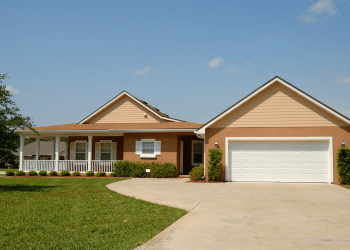As summer temperatures climb to uncomfortable heights, the search for cool sanctuary within our homes becomes increasingly urgent. Creating a personal oasis that provides relief from summer’s punishing heat doesn’t require expensive renovations or energy-draining air conditioning. With thoughtful planning and strategic adjustments, your home can become a refreshing retreat from the season’s sweltering embrace.
The science of staying cool involves understanding how our bodies regulate temperature and how our environments can either support or hinder this process. When summer heat intensifies, our homes often trap warmth, creating indoor environments that can feel even more oppressive than the outdoors. By addressing several key aspects of your living space—from air circulation to lighting choices—you can dramatically improve comfort during even the most brutal heat waves.
Effective air movement forms the foundation of any cooling strategy. High efficiency ceiling fans are one of the most easiest ways to create consistent airflow throughout a room. Unlike air conditioners that cool the actual air, ceiling fans create a wind-chill effect on skin, making you feel cooler without changing the room’s temperature. This distinction makes ceiling fans remarkably energy-efficient, consuming only a fraction of the electricity that air conditioning requires.
For maximum effectiveness, ensure your ceiling fans rotate counterclockwise during summer months. This direction pushes air downward, creating that crucial cooling breeze. Many don’t realize that most ceiling fans have a small switch that allows for seasonal direction changes—clockwise for winter to circulate warm air and counterclockwise for summer cooling. This simple adjustment can significantly enhance your comfort without increasing energy bills.
Strategic window management plays a critical role in maintaining cooler indoor temperatures. The timing of opening and closing windows can make the difference between trapping uncomfortable heat and welcoming refreshing breezes. During cooler morning hours, open windows to allow fresh air circulation, particularly if you can create cross-ventilation by opening windows on opposite sides of your home. As temperatures rise, close windows and draw blinds or curtains, especially on sun-facing sides of your dwelling.
Light-colored, thermal curtains can reflect sunlight and provide insulation, preventing up to 33% of heat from entering through windows. For a more permanent solution, consider installing exterior awnings, which can reduce heat gain by up to 77% on south-facing windows and 65% on west-facing windows according to Department of Energy figures.
Your choice of bedding and furniture coverings significantly impacts comfort during hot weather. Natural fibers like cotton, linen, and bamboo allow air circulation and wick moisture away from the body. Replace heavy winter bedding with lightweight, breathable alternatives, and consider using a cooling mattress topper designed specifically for summer comfort. Some innovative products incorporate phase-change materials that absorb body heat when you’re too warm and release it when you cool down.
Creating zones of cooling throughout your home allows for energy-efficient comfort management. Focus cooling efforts on spaces where you spend the most time rather than attempting to maintain the same temperature throughout your entire home. A strategically placed ceiling fan in your bedroom can make sleeping comfortable even when other parts of the house remain warmer. Similarly, creating a cool reading nook or work area with proper air circulation allows you to remain productive despite the heat.
The kitchen often becomes a problematic heat source during summer months. Minimize using ovens and stovetops during peak heat hours, opting instead for microwave cooking, slow cookers, or outdoor grilling. When kitchen activities are unavoidable, ensure proper ventilation with exhaust fans and consider setting up a portable fan to direct hot air outward through windows or doors.
Hydration and cooling from within shouldn’t be overlooked as part of your summer comfort strategy. Keep pitchers of cool water infused with cucumber, mint, or citrus readily available. Creating dedicated hydration stations throughout your home encourages regular fluid intake, which helps your body’s natural cooling mechanisms function optimally. Refreshing treats like homemade popsicles or frozen fruit can provide momentary cooling relief while contributing to overall hydration.
The psychological aspects of cooling deserve attention as well. Our perception of temperature is influenced by visual and sensory cues around us. Incorporate cooler color palettes into your summer décor with blues, greens, and purples that evoke feelings of coolness. Lightweight, flowing textiles that move with the air created by ceiling fans enhance the sensation of breeziness. Similarly, the sound of moving water from small indoor fountains can create a perception of coolness that complements actual temperature regulation efforts.
Evening cooling strategies help prepare your home for comfortable sleeping. As outside temperatures drop after sunset, create a strong cross-breeze by opening windows and positioning fans to draw in cooler night air. Ceiling fans in bedrooms provide the gentle air movement that many find conducive to restful sleep, without the noise and energy consumption of air conditioners.
For particularly challenging heat waves, consider creating one super-cooled retreat space within your home. This might be a bedroom or living area where you concentrate your cooling efforts with a combination of window coverings, ceiling fans, and possibly a small, energy-efficient air conditioner. Having at least one space where you can retreat during peak heat provides valuable physical and psychological relief.
Longer-term strategies for summer comfort include increasing your home’s shade profile with strategic landscaping. Deciduous trees planted on the south and west sides of your home provide natural cooling during summer while allowing warming sunlight during winter months after they’ve shed their leaves. Similarly, pergolas with climbing vines or retractable awnings create adjustable outdoor shade that can significantly reduce heat gain through adjacent windows and walls.
The most effective approach to creating your personal summer retreat combines immediate cooling tactics with forward-thinking adjustments to your living space. By layering multiple strategies—from the gentle movement of air provided by ceiling fans to thoughtful window management and cooling décor choices—you create an environment that remains comfortable despite external temperature extremes.
As climate patterns continue to shift toward more frequent and intense heat events, developing your personal cooling strategies becomes increasingly valuable. The solutions that work best will vary based on your specific home configuration, local climate, and personal preferences. By experimenting with different combinations of the approaches described here, you’ll discover the perfect formula for creating your own sanctuary from summer’s wrath—a comfortable retreat where you can rest, recover, and thrive even as temperatures soar outside.








